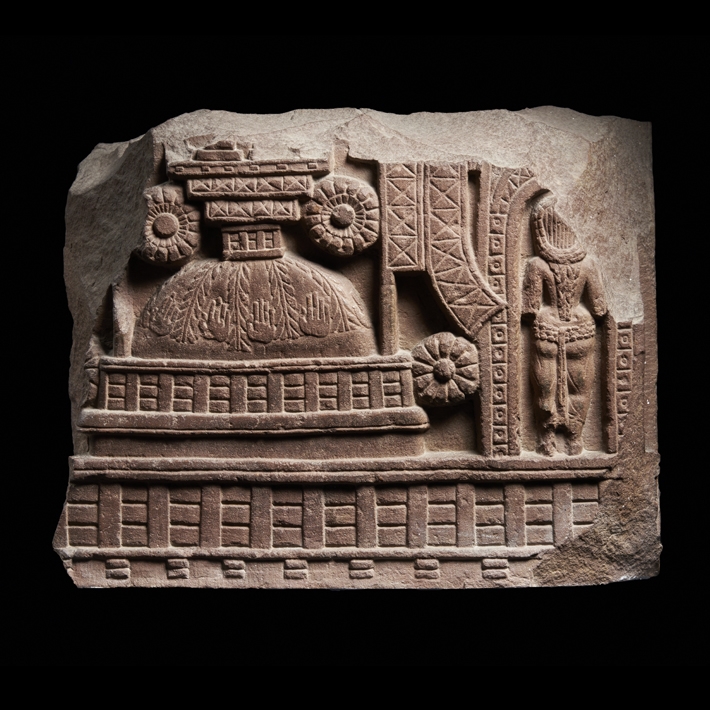58.Fragment of a coping: a stūpa protected with handprints

- ca. 150–100 BCE
- Bharhut mahācaitya, Satna district, Madhya Pradesh
- National Museum, New Delhi
According to early Buddhist texts, the "five-finger mark," or handprint—applied with the right hand dipped in sandalwood or a mixture of flour and goat's milk—was an auspicious device for warding off evil. Its application to the stūpa, as seen here on the dome, added a powerful protective presence. It also provides a participatory role for worshippers. In encouraging merit-earning activity among his followers, the Buddha commended the gifting of banners, flowers, and canopies, and the placement on the stūpa of "the [mark of the] five fingers." The Buddha also sanctioned the imprint of the perfumed hand on doors to ward off evil forces, as is still commonplace in villages in India today.

 Previous
Previous